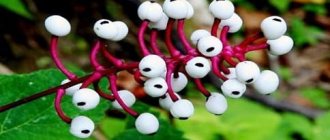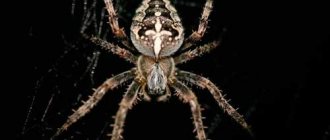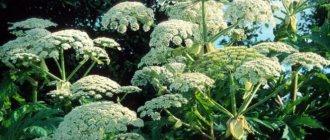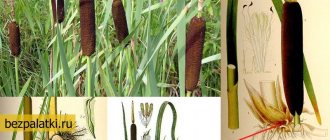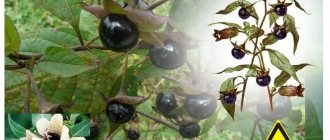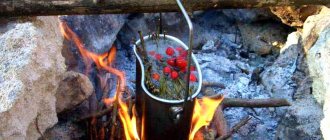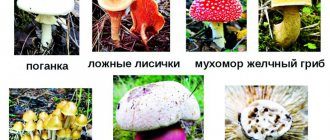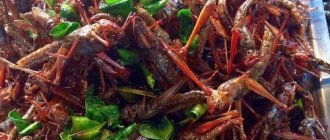Despite the fact that in almost every garden beautiful, bright varietal flowers and shrubs delight the eye, we cannot pass indifferently past their modest forest relatives. Surrounding ourselves with lush floral splendor, we lose the thread of natural harmony. And simple forest flowers give it to us again. This is probably why many of us want to move a “piece of forest” to our site. And it is quite possible to do this, because wild plants, for the most part, are unpretentious. They are well adapted to their natural habitat. They do not need weeding, additional watering, or artificial pollination.
However, when planting forest flowers, one very important factor must be taken into account - their compatibility with new conditions. For example, if a tall bell, accustomed to shady, damp places, is planted in a sunny flowerbed, then in the first year it will become small, and after a year it may not bloom at all. And its neighbors marigold, wintergreen and whitewing can die immediately in such conditions. Also, not everyone tolerates loosening the soil well. Weeds around Lyuba bifolia should not be weeded out, but periodically cut short. But wild-growing bulbous plants are ok with weeding. Some flowers may not have enough space in a cramped flower bed, while others may become very large and difficult to get rid of. Therefore, before planting wild plants on your site, you need to study how they grow in their natural habitat.
Forest plants prefer moist soil with a large proportion of leaf soil. It is necessary to plan their planting so that the chosen location is as close as possible to their natural growing conditions. If the plant becomes larger every year, grows and blooms profusely, then these conditions are suitable for it.
Let's take a closer look at some of the green inhabitants of the forest.
Spring flowers
In spring, there is still snow in the forest, and the first leaves and flowers can already be seen in the thawed patches. There is no need to introduce such inhabitants of the spring forest as snowdrops, scilla, muscari, crocuses, lilies of the valley, violets, and anemones. They are well known to everyone; breeders have developed many ornamental varieties of these plants. In spring you can also find such forest flowers as dream grass, lungwort, marigold, ivy-shaped budra, fragrant violet, spring primrose, fragrant woodruff and many others. Let's get acquainted with some of the rarer guests of garden plots.
liverwort
Noble liverwort (Hepatica nóbilis) - Ranunculaceae family, small herbaceous perennial (5-15 cm). Flowering occurs in April, the color of the flowers varies from whitish to blue-violet. One flower does not fade for almost a week. The diameter of the corolla is 2-4 cm. The three-lobed leaves, in their shape, vaguely resemble the human liver (hence the name). The leaves remain under the snow all winter (they only fade a little). Numerous fluffy hairs on the bottom of the leaves and on the petioles help to retain heat and survive spring frosts. After flowering, a fruit with seeds about 8 mm in diameter is formed. It is odorless and attracts insects with its pollen. Most often this flower can be found in spruce forests. Therefore, the noble liverwort is suitable for an open place with sun from early morning until 14:00. The soil needs to be loose, rich in humus. Is medicinal. This plant is often confused with snowdrop and blueberry.
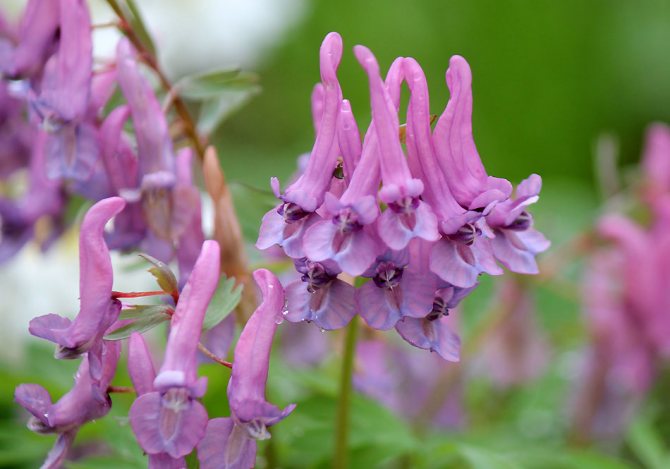
Corydalis
Corydalis (Corydális) is a family of Dymyanaceae, a herbaceous plant 10-20 cm high. The leaves are dissected. Inflorescences are a dense brush. The flowers are sometimes white, but more often red-lilac or light purple. Flowering continues from April to June. Tuberous plant. Grows in mixed forests. Very resistant to frost, as well as pests and diseases. Prefers slightly acidic humus soils. It multiplies quickly and does not like stagnant water. Has many types.

Chistyak spring
Spring grass (Ficaria) - Ranunculaceae family, low perennial (10-30 cm). The hoof-shaped lacquer leaves are emerald green. The flowers are small bright yellow glossy stars. One of the first to bloom together with snowdrops. Looks like a small bouquet. It looks bright and delightful against the backdrop of the still bare earth. But it multiplies very quickly and can become a weed. By the time the seeds ripen, it becomes poisonous. Medicinal plant.
Hogweed
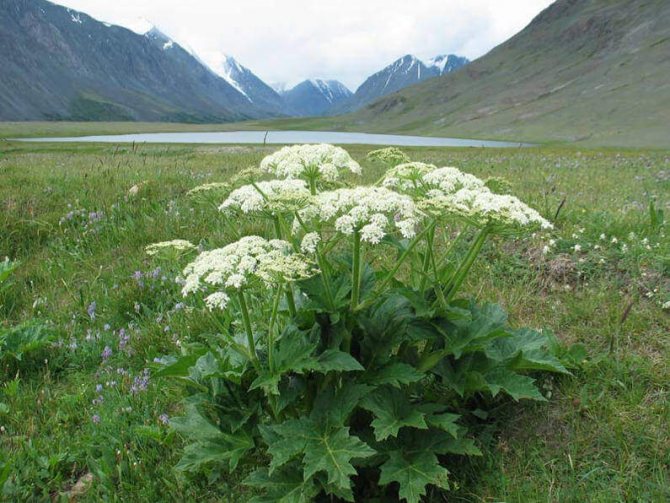
The huge hogweed plant has edible roots, leaves and shoots. Its stems are very juicy and will perfectly quench your thirst. The rhizome has a sweetish, pleasant taste; its calorie content and sugar content are comparable to corn. But the leaves of the plant have a rich and pungent odor, and before use it would be better to soak them in several waters. However, it should be borne in mind that some types of hogweed are poisonous and are not suitable for food.
Interesting: Why is buying Russian Railways tickets online profitable?
Summer flowers
In summer, flowers in the forest surprise with their diversity. These are gentian, cornflower, wild bergenia, Veronica officinalis, bluebells, forget-me-nots, cornflowers, lunaria, common sorrel, wild poppy and many others. Let's take a closer look at some of them.
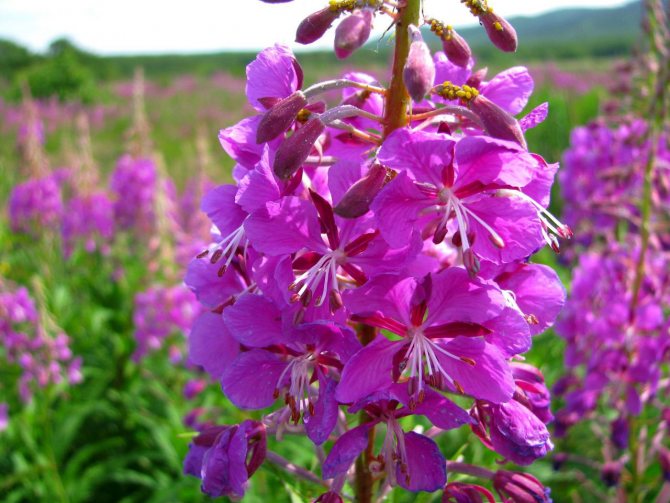
Fireweed
Fireweed or fireweed (Epilobium angustifolium L.) - Onagricaceae family. The stem of fireweed is erect with lanceolate leaves, growing from 50 cm to 2 m. The inflorescence is a raceme of large pinkish-crimson flowers that bloom gradually from bottom to top. Flowering occurs in the second half of summer and lasts approximately 30 days. Grows in forests, on the edges, fires, clearings, and slopes of ravines. Unpretentious, frost-resistant. The rhizome grows very strongly, so it needs to be thinned out before the seeds ripen. Amazing honey plant. It has a lot of useful medicinal properties.

Kupena
Kupena or Solomon's seal (Polygonatum multiflorum) - the Liliaceae family, a herbaceous plant with a curved stem 60-70 cm. Oval leaves (10-12 cm) are located on the stem in symmetrical pairs. The axillary flowers are whitish-cream in shape and resemble elongated bells up to 1.5 cm. They have practically no smell. Kupena vaguely resembles a large lily of the valley. Blooms in early June. Then, in place of the flowers, black berries are formed. Every year the shoot dies. Kupena is unpretentious, but does not like dry places. The wild plant can be propagated locally by dividing the rhizome. Poisonous. Has medicinal properties. Grows in deciduous-spruce forests.
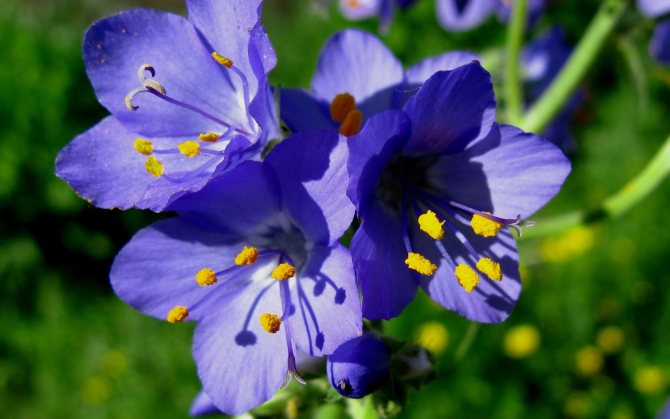
Cyanosis
Blue or azure cyanosis (Polemónium caerúleum) - family Ciniumaceae. The stem is erect, from 40 cm to 1 m. The leaves are oblong, imparipinnate. Blooms in June-July. The inflorescence is a panicle of beautiful blue flowers. After flowering, the plant does not look decorative; it is recommended to cut it off immediately. After cutting, it quickly recovers and becomes attractive again. Blueberry is winter-hardy and unpretentious, but loves low-lying areas where groundwater is close. In nature it grows in forest-steppe zones in damp places. Has medicinal properties.

Meadowsweet
Meadowsweet or meadowsweet (Filipendula ulmaria) - the Rosaceae family, has an erect stem reaching two meters. The large, dark green, three-lobed leaves are pubescent underneath. When rubbed, they emit a characteristic cucumber smell. The inflorescence is an erect panicle of many small white-pink or pale yellow flowers. Blooms in mid-summer. Has a very strong aroma. The thick, creeping rhizome forms new shoots by August. Meadowsweet is a cold-resistant and moisture-loving plant. Distributed in forests and forest-steppes, in damp places. Excellent honey plant. It is a medicinal plant.
It will be useful to read:
Popular spring bulbous flowers Among the spring primroses, the leading position is, without a doubt, occupied by bulbous flowers. And this is well deserved. After all…
Mosses and lichens
Sphagnum
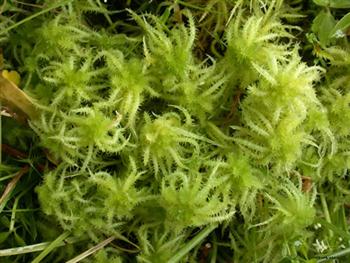
In my opinion, the most popular type of moss in the taiga forest. Its presence indicates that the soil is swampy. By the way, peat is formed from sphagnum. Sphagnum is very hygroscopic and consists almost entirely of water. It is widely used in construction, plugging cracks between logs. It prevents rotting due to the preservative substances it contains. During two world wars, soldiers, due to the lack of medicine, used sphagnum as a dressing material to promote rapid healing of wounds.
Autumn flowers
In the autumn forest, which is full of bright colors, the flowers become less flashy and not so noticeable; they also bloom in the fall, but in a special way, more modestly. What flowers can be found in the forest in autumn? These are mainly summer flowers that continue to bloom: autumn anemone, gentian, meadow greenweed, cornflower, clover, cinquefoil, oak grass, tsmin, umbrella hawkweed, autumn kulbab, black cohosh and others.
At the beginning of autumn in the forest we are pleased with the flowers of oregano, goldenrod, bellflower, and violets saying goodbye to summer.

Oregano
Oregano or oregano (Origanum vulgaris L.) is a family of Lamiaceae, a small perennial (30 to 80 cm). Small two-lipped flowers are collected in oval spikelets, which are collected into panicles at the end of the branches. The color of the flowers is pinkish-purple, less often white. Blooms all summer and early autumn. In August the seeds begin to ripen. The plant is cold-resistant, undemanding, but does not grow well in heavy acidic soils. Light-loving. Very widespread. It grows in the steppes, in clearings and forest edges, on the slopes of ravines. Loves pine and aspen forest areas. It has a strong pleasant aroma and bitter-spicy taste. It is a medicinal plant and is used in cooking as a spice. It is used in the design of mixborders, rockeries, and ridges.

goldenrod
Common goldenrod or goldenrod (Compositae) is a family of Asteraceae, a perennial with reddish stems from 40 cm to 1 m. Oblong-oval leaves with small denticles along the edge. Paniculate inflorescences are collected from baskets, which, in turn, consist of small yellow flowers. From the second half of summer until the end of September they bloom. It grows in forests, on the slopes of ravines, on forest edges, clearings, and clearings. Unpretentious. Sometimes requires a garter. If you want to avoid self-seeding, you should cut it off immediately after flowering. Goldenrod can be planted along fences and is also suitable for flower beds and mixed borders.

Twisted bell
Twisted or assembled bell (Campanula glomerata L.) - the Campanula family, perennial up to half a meter high. It has lanceolate wide leaves. The capitate inflorescences resemble small bouquets consisting of small blue-violet bells (sometimes white). Blooms all summer and early autumn. Unpretentious. It grows on the edges and clearings in the forest, as well as among bushes. Medicinal plant. In landscape design they are used for planting under trees, in gardens, natural gardens and for cutting.
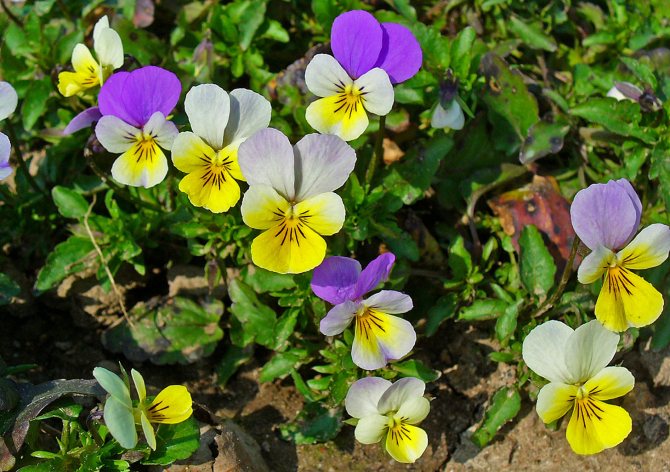
Violet tricolor
Tricolor violet or pansy (Viola tricolor L.) and field violet (V. arvensis Murr.) are the Violet family, annual and biennial herbaceous plants with an erect, slightly ribbed stem 10-45 cm. The leaves are jagged at the edges and have an ovoid shape. The flowers are single, irregular, consisting of 5 petals, located on a long stalk. The tricolor violet has a long corolla. The upper two petals are purple or dark blue, the two lateral ones are the same color, only lighter, and the lower large petal with a spur is light yellow (maybe with a purple edge). But the field violet has a short corolla and smaller flowers. They also differ in color. The field violet has white upper petals, and the middle and lower petals are bright yellow. Violets bloom from May to early October. It is found everywhere on the edges and clearings of the forest, in forest belts, and also along roads. Violet is undemanding and frost-resistant. Prefers neutral soils. Doesn't like fertilizer with fresh manure! Caring for wild violets is the same as caring for its decorative varieties. It is a medicinal plant.
But there are flowers in the forest that bloom in autumn, these are autumn colchicums. The name itself suggests that it blooms at the wrong time, unlike all its bulbous counterparts. He confused spring with autumn.
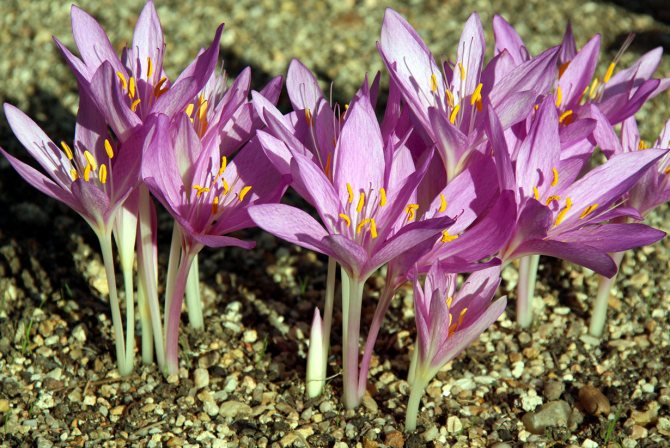
Autumn colchicum
Colchicum autumnale (Colhicum autumnale) - Liliaceae family, bulbous plant about 10 cm. The aboveground stem is erect, rounded. Three or four wide-lanceolate leaves are collected in a rosette around the fruit; in mid-summer they die, and with the onset of cold weather large flowers up to 25 cm, similar to crocuses, appear. Flower color ranges from white to purple. Blooms in the first half of autumn. In nature, it is found in wet flooded meadows, along rivers and streams. Colchicum is an unpretentious plant. In the fall, it will be able to decorate the area, and it will stand in a vase for about 5 days. You just need to remember that the entire plant is poisonous. You need to wear gloves and take precautions when working with it.
Forest shrubs
There are many beautiful shrubs in our forests, you just have to look closely. Here the hazel has hung its beautiful long catkins, wild species of willow are greeting spring with fluffy “seals”, wolf's bast, euonymus, honeysuckle, dogwood, brittle buckthorn, and privet are delighting with flowers and decorative fruits. Beautiful and useful black elderberry, hawthorn and blackthorn. You can't count them all.
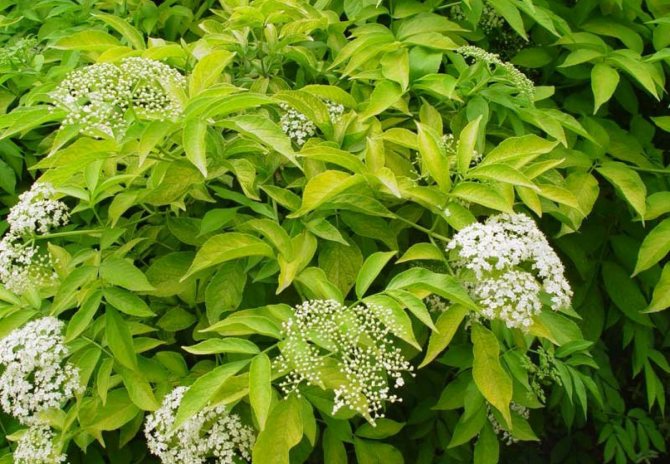
Elder
Black elderberry (Sambucus nigra) - this shrub is found everywhere in the wild. Its height is 6-10 m, the leaves are large and slightly shiny. In May it is covered with fragrant whitish-cream umbels of inflorescences. And as autumn approaches, the flower umbrellas turn into clusters of black berries. This unpretentious shrub causes trouble on the site due to its active reproduction. However, this is not a reason to refuse this nice and very useful medicinal plant.

Hawthorn
Hawthorn (Crataegus) is a tall bush of the Rosaceae family. Has many types. This plant remains decorative for almost the entire warm season. At first, the bush pleases the eye with beautiful white flowers, and in the fall it bursts with red-orange clusters of very healthy berries. The color of the fruit can range from light orange to black. A very undemanding and robust plant. Beautiful in hedges, thorny branches will make such a barrier impassable. It also looks decorative alone on the edges.
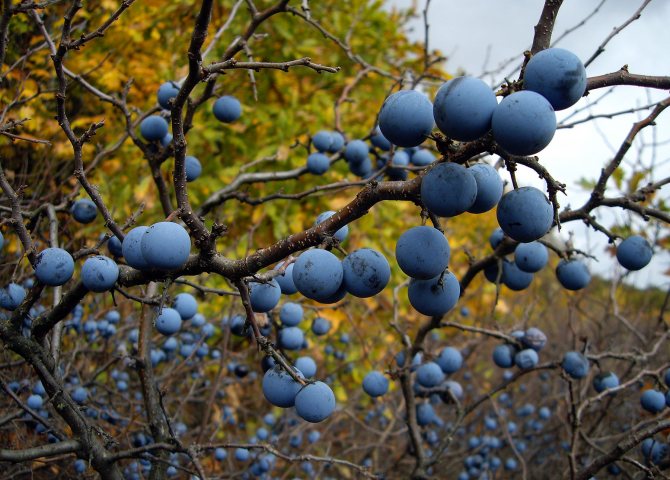
Turn
Thorn or blackthorn (Prunus spinosa L.) is a branched prickly shrub from 1.5 to 4 m, from the Rosaceae family. Oblong-oval leaves with toothed edges. In the spring it is covered with small white five-petaled flowers, and in the fall in their place black and bluish fruits appear, reminiscent of small cream. Sweet and sour in taste, they have a slight tartness. Medicinal plant. In the wild it grows in the forest-steppe zone. Unpretentious.
